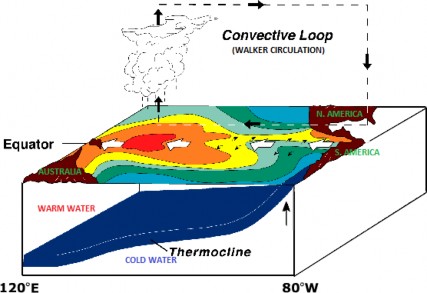Figure 1 – El Nino conditions: Warm water pool approaches the South American coast. The absence of cold upwelling increases warming.
Under normal conditions, the cold Peruvian current flows equatorward along the coast of Ecuador and Peru (figure 2). The Peruvian current is slow and thus not very strong. Near the coast, it is only about 200m deep, while increasing to 700m offshore. In the absence of an El Niño, prevailing surface winds deviates water considerably to the left or away from the coast, with subsequent upwelling of cold water from below. This upwelling of deep, nutrient-filled waters is the primary food source for millions of fish, particularly anchovies along the Pacific Coast of South America.
During El Niño, surface winds are weaker than their average value. Weaker surface winds are beneficial for warm counter-equatorial current that becomes strong and replaces Peruvian

1 Counter-equatorial current - Between the North and South Equatorial currents, there is a surface current moving down slope west to east, the Equatorial Countercurrent. This current helps to return surface water accumulated against the eastern coast of continents by the Equatorial currents. It is this counter-current in Pacific Ocean that increases in strength and triggers an El-Niño event.
current along the coast of South America. This current carries warm water of west Pacific Ocean to central and eastern Pacific Ocean. It increases the Pacific Ocean’s sea surface temperature (SST).

